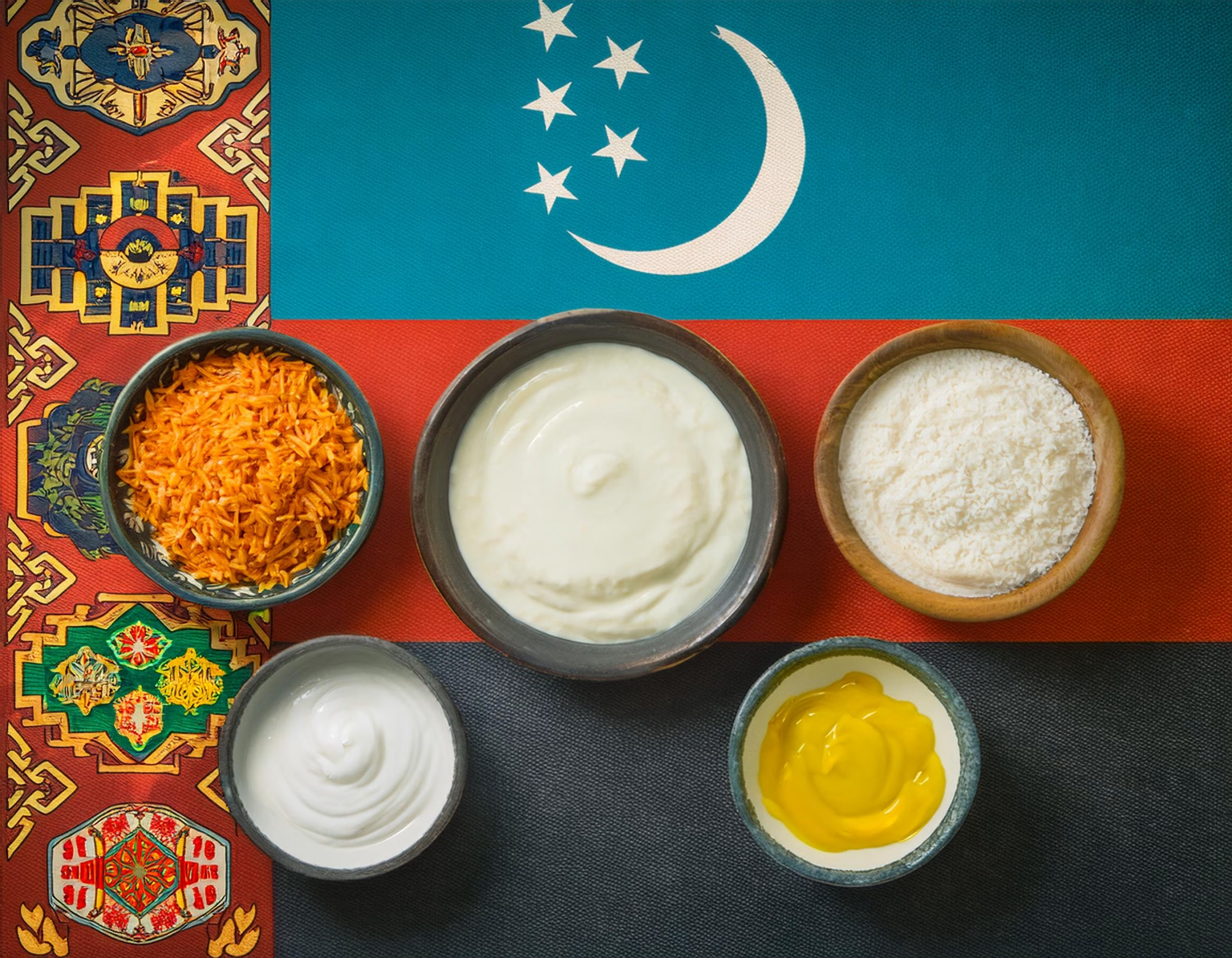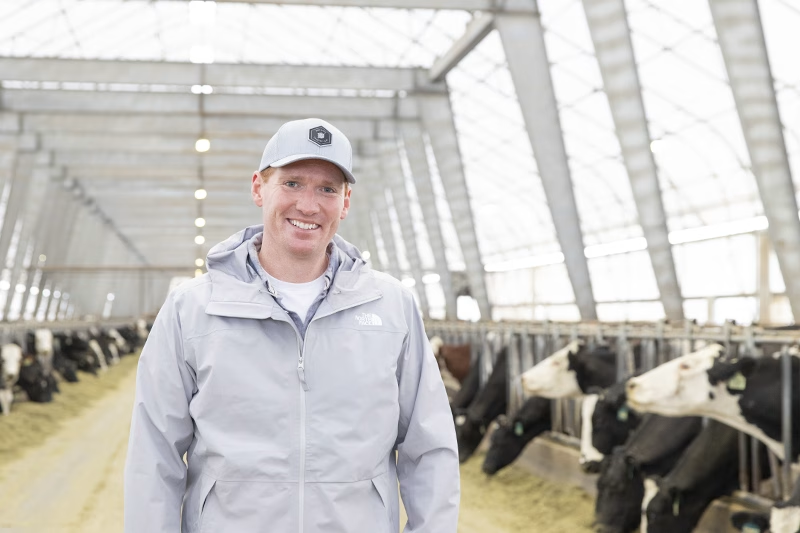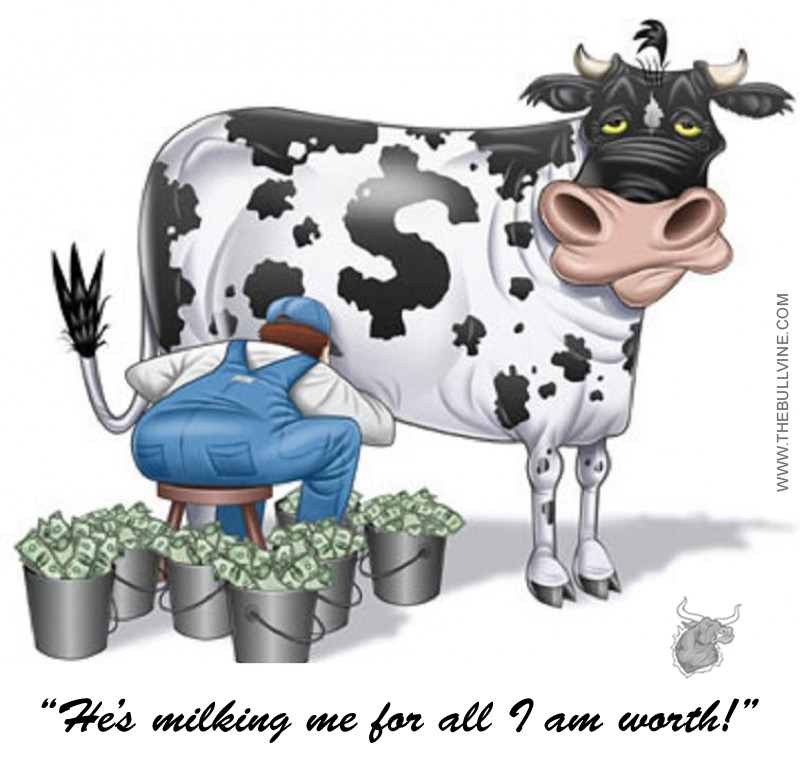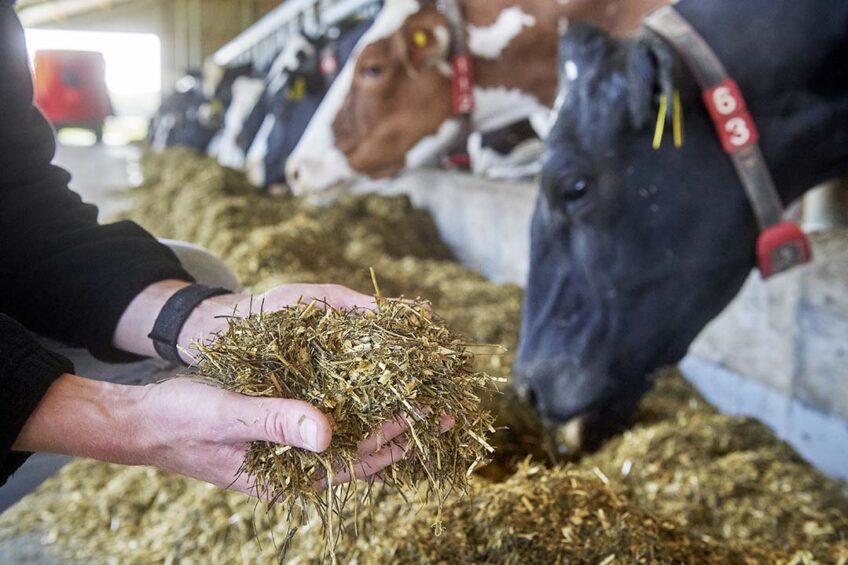Trump’s tariffs spark 12% milk price crash. With 43% of dairy exports at risk, can farmers survive the trade war?
EXECUTIVE SUMMARY: The U.S. dairy industry faces mounting pressure as President Trump’s tariffs trigger a 12% milk price drop before implementation, jeopardizing $8.2B in annual exports. Mexico and Canada—which buy 43% of U.S. dairy exports—face retaliatory risks, while China’s 125% tariff hike worsens tensions. Farmers already report rising input costs (e.g., $21k steel tariff impacts) and potential annual losses up to $56k for mid-sized operations. Industry groups warn of long-term market damage, urging producers to hedge prices, diversify markets, and leverage USDA safety nets. The 90-day tariff pause offers fleeting relief, but survival hinges on rapid adaptation to volatile trade policies.
KEY TAKEAWAYS:
- Preemptive Price Plunge: Milk futures dropped 12% on tariff threats alone, outpacing 2018 trade war impacts.
- Export Addiction: 15-20% of U.S. milk production is exported, with Mexico ($2.47B) and Canada ($1.14B) as lifelines.
- Canada’s TRQ Trap: Despite USMCA, administrative barriers block U.S. access to Canada’s “0% tariff” quotas.
- Small Farm Crisis: Tariffs could slash $56k/year from mid-sized farms, exacerbating existing financial strains.
- Survival Playbook: Lock contracts, hedge prices, and target Southeast Asia to offset North American trade risks.

The U.S. dairy industry faces unprecedented challenges as new tariff policies threaten $8.2 billion in annual exports. With Mexico and Canada representing over 40% of export value, dairy producers must navigate market volatility while preparing for potentially prolonged trade disputes—all while milk prices have already dropped 12% since February.
As President Donald Trump implements aggressive trade policies, the U.S. dairy industry is walking a precarious tightrope. On April 9, 2025, Trump announced a 90-day pause on most tariffs while raising the tariff rate on Chinese imports to 125%. This strategic pivot comes after weeks of escalating tensions that began when Trump imposed 25% tariffs on all Canadian and Mexican goods on March 4.
Historical Context: We’ve Been Here Before
The current tariff scenario is like policies implemented during Trump’s first administration. During that period, tariffs significantly impacted milk prices, prompting federal compensation programs to offset losses for producers.
“Tariffs make you a little bit nervous when you’re an American farmer,” says Hans Brighton, who owns a dairy farm with about 460 cows in Merill, Wisconsin. This sentiment reflects widespread concern throughout America’s dairy regions.
The use of tariffs as negotiation leverage isn’t new. During the United States-Mexico-Canada Agreement (USMCA) negotiations, tariff threats were leveraged to secure concessions, ultimately improving market access for some dairy products but creating significant short-term disruptions.
Current Market Dynamics: The Damage Is Already Done
The mere discussion of new tariffs has already impacted dairy markets. Since Trump first credibly threatened tariffs in early February, May Class III and Class IV milk futures have lost 12% and 9% of their value, respectively. This price volatility highlights the immediate responsiveness of agricultural markets to trade policy announcements, even before implementation.
“We’re facing a double challenge — lower prices coupled with increasing costs,” explains AJ Wormuth, who manages 3,600 dairy cows at Half Full Dairy in upstate New York. He accelerated a barn renovation after being informed that the cost of new metal stalls would increase by $21,000 due to Trump’s 25% tariffs on steel and aluminum.
The stakes are particularly high for the dairy industry, which has grown increasingly export-dependent. U.S. dairy exports reached $8.2 billion in 2024; the second-highest total export value ever recorded. Nationally, the sector exports 15% to 20% of dairy production, making international markets a key demand factor for financial success.
| Country | Export Value (USD) | % of Total Exports | Key Products |
| Mexico | $2.47B | 30.0% | Cheese, NFDM/SMP |
| Canada | $1.14B | 13.9% | Fluid Milk, Yogurt |
| China | $584M | 7.1% | Whey, Infant Formula |
| Japan | $394.6M | 4.8% | Cheese, Butter |
| South Korea | $385.7M | 4.7% | SMP, Lactose |
| Total Global | $8.22B | 100% |
The Canada Conundrum: Beyond the 250% Headlines
Trump’s criticism of Canada’s dairy tariffs—reaching as high as 298% for butter and 270% for dairy powder—is technically accurate but lacks essential context. These high rates only apply when imports exceed established tariff-rate quotas (TRQs). Under the USMCA, U.S. dairy products can enter Canada duty-free or with minimal tariffs until specific quotas are reached.
“[Canada] has a large dairy-producing constituency that it wants to protect, so they put a cap on imports that can be accessed at a competitive rate. That’s a ‘TRQ’ (tariff rate quota),” explains Becky Randall Vargas, senior vice president of trade and workforce policy at the International Dairy Foods Association.
The issue isn’t just the tariff rates but administrative barriers that make it difficult for U.S. exporters to fully utilize their quota access, including requirements to sell directly to Canadian competitors and restrictions on retailers obtaining import licenses.
| Product | Tariff-Rate Quota (TRQ) | Within-Quota Tariff | Over-Quota Tariff |
| Fluid Milk | 64,500 metric tons | 0% | 241% |
| Cheese | 12,500 metric tons | 0% | 245.5% |
| Butter | 3,200 metric tons | 7.5% | 298.5% |
| Skim Milk Powder | 14,000 metric tons | 0% | 270% |
Voices from the Front Lines: Small Farms Hit Hardest
For smaller operations, the concerns are especially pressing. Annie Watson, who operates an organic dairy farm in Maine with 70 cows, highlights the longer-term planning challenges: “As dairy farmers, we work within three-year cycles — from the birth of a calf until it becomes a milking cow. Things don’t happen quickly on our farms, so when policies are implemented swiftly, it poses challenges for those engaged in this cycle.”
Near the Canadian border, Watson sources most of her feed from Canada. She calculates that the tariffs could increase her grain expenses by $1,200 monthly. “It would be more manageable if many of our organic dairy farmers weren’t already financially struggling due to market conditions,” notes Watson, who also leads the Maine Dairy Association.
Leonard Poen of the University of Wisconsin-Madison extension says retaliatory tariffs could decrease the income of a medium-sized farm in Wisconsin with about 250 cattle by up to $56,000 per year. “I don’t think any part of the supply chain is going to be insulated from this,” he warns.
Industry Response: Balancing Trade Fairness with Market Stability
The American Farm Bureau Federation, the primary agricultural lobbying group, has indicated that the tariffs jeopardize the competitiveness of U.S. farmers and could inflict long-term harm by diminishing their market presence.
“We align with the administration’s aim of creating a fair, competitive environment with our global counterparts, yet the rise in tariffs jeopardizes the economic viability of farmers who have faced financial losses on most major crops over the past three years,” stated Zippy Duvall, the organization’s president.
The National Farmers Union offers a different perspective, pointing to underlying structural issues: “Policymakers are focused on U.S. trade policy without solving the underlying problems in the dairy industry—corporate consolidation and continued overproduction. Broad dairy tariffs don’t solve these problems; they destabilize the industry, drive up costs, and create more uncertainty for American dairy farmers, processors, and rural communities,” stated NFU President Rob Larew.
The China Factor: 125% Tariffs Raise the Stakes
While Trump’s pause on most tariffs may provide temporary relief, the escalation with China to a 125% tariff rate represents a significant intensification of trade tensions. This is particularly concerning given that U.S. dairy exports to China declined in 2024, marking the lowest year since 2020.
The targeted approach represents a narrowing of an unprecedented trade war between the U.S. and most of the world to one between the U.S. and China. This strategic pivot may reduce widespread market disruption but could further complicate dairy exports to the Chinese market.
China has already announced retaliatory measures, including a 34% additional tariff on all U.S. goods and export restrictions on rare earth materials. These actions are part of a broader pattern of escalation that began in February 2025 and has intensified through April.
| Year | Export Value (USD) | Annual Change | Key Driver |
| 2020 | $6.81B | +4.2% | Chinese Whey Demand |
| 2022 | $9.70B | +18.1% | Post-Pandemic Recovery |
| 2024 | $8.22B | +2.8% | Record Cheese Exports |
| CAGR | +4.6% |
Tariff Survival Checklist: Protecting Your Operation
As trade tensions escalate, here are five immediate actions dairy producers should consider:
- Lock in contracts now: If possible, secure export contracts before tariffs take full effect
- Monitor futures markets weekly: Set price alerts and consider hedging strategies
- Evaluate your export exposure: Calculate what percentage of your milk goes to export markets
- Explore USDA risk management programs: The Dairy Margin Coverage program provides a safety net
- Diversify export destinations: Consider emerging markets in Southeast Asia less affected by current tariffs
“For the third straight year, farmers are losing money on almost every major crop planted,” Zippy Duvall of the American Farm Bureau notes. “Adding even more costs and reducing markets for American agricultural goods could create an economic burden some farmers may not be able to bear.”
The Bottom Line
The U.S. dairy industry is walking a precarious tariff tightrope as it navigates the reintroduction of aggressive trade policies under Trump’s second administration. The 90-day pause announced on April 9 provides a reprieve for most trading relationships, but uncertainty remains the prevailing market condition.
The lessons from Trump’s first term are clear for dairy producers: tariffs can be effective negotiation tools but often come with significant short-term costs to agricultural sectors. The industry’s growing export dependence makes it particularly vulnerable to trade disruptions, with even threats of tariffs capable of triggering market downturns.
What This Means for Your Operation: Contact your congressional representatives through the National Milk Producers Federation’s advocacy portal by April 30 to voice concerns about tariff impacts. Review your export contracts for force majeure clauses that trade disputes might trigger. Consider attending the USDA’s upcoming June 2025 tariff mitigation webinar to learn about compensation programs that could offset market losses.
The following 90 days will be critical—monitor developments closely and prepare contingency plans for best and worst-case scenarios. Your farm’s financial survival may depend on how quickly you adapt to this rapidly changing trade landscape.
Learn more:
- Trump’s Liberation Day Tariffs: A $8.2B Gamble for Dairy Farmers – Examines how retaliatory tariffs threaten $8.2 billion in U.S. dairy exports and provides survival strategies amid H5N1 outbreaks and collapsing milk prices.
- GLOBAL DAIRY MARKETS ROCKED: US-China-Canada Tariff War Sends Shockwaves Worldwide – Explores how the trade clash impacts milk prices and farm incomes worldwide, with analysis of opportunities for European and Oceania producers.
- Dairy Caught in Trump’s Tariff Crosshairs as Rollins Teases Trade Deals by Friday – Breaking news on Agriculture Secretary Brooke Rollins hinting at potential trade deals by week’s end as 70 nations seek negotiations amid the implementation of 104% tariffs.
 Join the Revolution!
Join the Revolution!
Join over 30,000 successful dairy professionals who rely on Bullvine Daily for their competitive edge. Delivered directly to your inbox each week, our exclusive industry insights help you make smarter decisions while saving precious hours every week. Never miss critical updates on milk production trends, breakthrough technologies, and profit-boosting strategies that top producers are already implementing. Subscribe now to transform your dairy operation’s efficiency and profitability—your future success is just one click away.







 Join the Revolution!
Join the Revolution!















